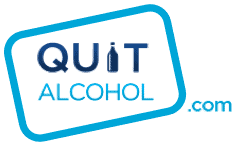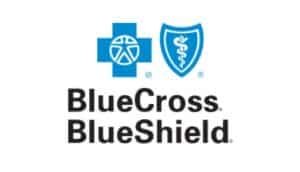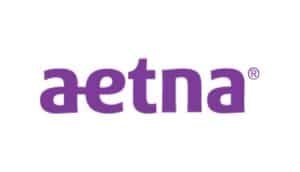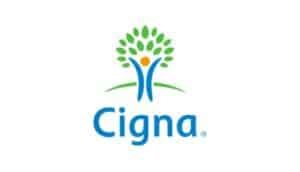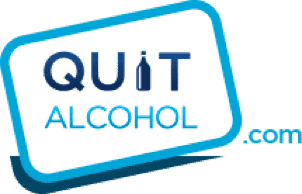Overview
Beginning in the late 1900s with laws which outlawed opium smoking, popularized in the U.S. by Chinese railroad workers, state and federal governments have instituted various laws and policies meant to curb drug and alcohol abuse within the nation. Since the late 1800s to today, laws and policies have been developed to stem both the supply and demand of illegal drugs, distribution and availability of prescription medications. In 1920 the U.S. government instituted prohibition against production, distribution, and consumption of all alcoholic beverages. The Nixon administration in 1971, declared war on illegal drugs which continues to rage to this day.
Chronology of Government Narcotics Policies and Actions
1875 — San Francisco passed the Opium Den Ordinance; an ordinance which made it a misdemeanor to operate or frequent opium dens. Sacramento, Virginia City, Stockton, and Oakland, towns with Chinese immigrant populations, followed San Francisco’s lead in passing similar ordinances. By 1881, with anti-Chinese sentiment growing, opium restrictions were enacted throughout the entire state of California.
Upon realizing the ineffectiveness of the ordinance in curbing the demand for opium, authorities in San Francisco soon placed a tariff on the import of opium within its ports, while street sales remained illegal. Arrests for opium offenses were relatively rare and penalties most often limited to fines; occasionally a jail sentence would result. In 1907 the state of California began getting tougher on non-medical use of drugs which eventually led to unforeseen consequences.
1907 –Â California passed a law which made non-prescription sale of opium and cocaine illegal. Enforcement of the new anti-drug law was stepped up as well. As a precursor to modern day law enforcement strategy, officers were dispatched to infiltrate the drug culture and to cultivate informants, much like we see in the modern day war on drugs. These tactics drove drug sales and use underground, and the crackdown on previously prescribed narcotics led addicts to easier to obtain drugs such as heroin and morphine (Gieringer).
1914 — The U.S. Congress passed the Harrison Act; the first federal law to criminalize the use of non-medical use of prescription narcotics as the state of California had done in 1907. The Harrison Act outlawed the use of cocaine, opium, and morphine and its various derivatives. Not included in the Harrison Act were amphetamines, barbiturates, marijuana, hashish, nor hallucinogenic drugs of any kind.
During this era in the U.S., “states rights” held more legislative power than did the federal government. There was a concern that congress did not possess the power to enact such a wide-sweeping federal law. This concern led to the Harrison Tax Act, a novel approach by congress to get around any constitutional restrictions which restrict federal overreach.
In order to ensure proper distribution of prescribed medications between doctor and patients, a nominal tax was paid by physicians in order to obtain a stamp which allowed for the prescription of narcotics, so long as the regulations included in the Harrison Act were followed. A second tax, at a much steeper cost, was required for the non-medical distribution of narcotics, conventional wisdom being that regulations would be followed in order to avoid the higher of the two taxes. Interestingly, if an individual was found to be in possession of one of the drugs banned by the Harrison Act, the federal criminal charge would be tax evasion. In 1971 the Nixon administration enacted legislation from which the phrase “war on drugs” was first coined (“The Harrison Act”).
1970 — Following decades of attempts to curb illegal drug trade and increased drug addiction statistics within the U.S., President Nixon signed into law the Comprehensive Drug Abuse and Prevention and Control Act of 1970. This law compressed the Harrison Act and its various amendments and alterations into one comprehensive law. According to the U.S. News and World Report “[the Controlled Substances Act of 1970] consolidates over fifty federal narcotic, marijuana and dangerous drug laws into one law designed to control the legitimate drug industry and to curtail importation and distribution of illicit drugs throughout the United States”(qtd in Harrison, Backenheimer, Inciardi).
The Controlled Substance Act categorized drugs into two classifications: Schedule I drugs are considered to have no medicinal qualities while having a potential for abuse; Schedule II drugs are considered to be of medicinal value while also having the potential for abuse. Drugs considered Schedule I include: heroin, marijuana, and various hallucinogenics while Schedule II drugs include morphine and cocaine.
As with the Harrison Act of 1914, the Controlled Substance Act of 1970 focused mainly on the supply side of narcotic distribution and the penalties involved with possession and distribution. No attention seemed to be directed to the addict or decreasing demand.
1980 — 1990 Â
Two factors during the 1980s, HIV/AIDS and crack cocaine, had a major influence over the direction of the war on drugs. It was determined that intravenous drug users who regularly shared needles were at increased risk of contracting HIV. To increase awareness, Congress in 1986 passed the Anti-Drug Abuse Act which increased the federal block grant program for substance abuse and addiction services and increased funding for the study of AIDS.
In 1988 Congress passed the Omnibus Anti-Drug Abuse Act which allocated funding for school based educational programs and for drug abuse treatment with an increased focus on intravenous drug use.
The problem of crack cocaine was handled much differently. Crack cocaine, a cheaper more widely available alternative to powdered cocaine, became popular mainly within minority communities and punishment, rather than treatment, became the strategy with which to attack this among lawmakers. Harsher, mandatory sentences were put in place and are largely responsible for the explosive increase in prison population. Arguments over the fairness of this strategy continue today (Wilson).
The Obama Administration
The Office of National Drug Control Policy offers Federal Initiatives that support recovery in the community which include:
Access to Recovery (ATR): a Substance Abuse and Mental Health Services Administration (SAMHSA) program which awards competitive grants to states and tribes to implement voucher systems for purchasing substance use disorder treatment and recovery support services. ATR provides states and tribes with an excellent mechanism for developing systems and services that more effectively support long-term recovery.
Recovery Community Services Program (RCSP): a SAMHSA grant program which funds     organizations to provide peer-to-peer recovery support services for people in or seeking recovery from alcohol and drug problems. Initiated in 1998, RCSP has seeded the development of numerous recovery community organizations.
Targeted Capacity Expansion-Local Recovery-Oriented Systems of Care (TCE-ROSC): SAMHSA’s Targeted Capacity of Expansion (TCE) Local Recovery-Oriented Systems of Care (TCE-Local ROSC) grants assist in the development of Recovery-oriented Systems of Care (ROSC) at a local level.
Partners for Recovery (PFR): a SAMHSA initiative that supports the development of recovery-oriented policy, systems and services. It engages diverse stakeholders including Federal agencies, states, tribes, local governments, professional/ trade associations, faith-based groups, health care professionals, nurses, social workers, and recovery support services providers to accomplish this.
Addiction Technology Transfer Center (ATTC) Network: SAMHSA/CSAT funds a network of 14 regional ATTCs, which provide training and technical assistance to states. The ATTC network publishes guides, toolkits and monographs supporting treatment and recovery systems and services. These include numerous publications on recovery-specific topics. Each of the ATTCs has established a ROSC implementation support team to assist states in implementing ROSC.
U.S. Department of Education Higher Education Center for Alcohol, Drug Abuse, and Violence Prevention: The Center provides support for campus alcohol, other drug, and violence prevention efforts nationally. It assists colleges and universities in developing strategies for changing campus culture, fostering environments that promote healthy lifestyles and support recovery, and preventing illegal alcohol and other drug use among students (Office of National Drug Control Policy).
References:
Gieringer, Dale. “125th Anniversary of the First U.S. Anti-Drug Law”. Drugsense.org.  Â
Retrieved from: https://www.drugsense.org/dpfca/opiumlaw.html
Harrison, Lana D., Backenheimer, Michael and Inciardi, James A. “History of Drug Legislation”Â
CEDRO. CEDRO. Retrieved from:
https://www.cedro-uva.org/lib/harrison.cannabis.05.html
“Federal Initiatives”. The Office of Drug Control Policy. The White House. USA.Gov.
Retrieved from: https://www.whitehouse.gov/ondcp/programs-initiatives-trends
Wilson, Steven. “Drug Abuse Prevention, Treatment and Rehabilitation Act (1980)”. eNotes.
eNotes.
Retrieved from:
https://www.enotes.com/drug-abuse-prevention-treatment-rehabilitation-act-Â Â Â Â Â Â Â reference/drug-abuse-prevention-treatment-rehabilitation-act
